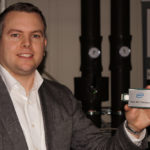“The SCC reproducibility program is part of a wider effort to encourage authors submitting papers to the conference to voluntarily complete an appendix to their paper that described the details of their software environment and computational experiments to the extent that an independent person could replicate their results.”
Archives for March 2017
Huawei and Altair to Build Industrial Simulation Cloud Solutions
“The Huawei-Altair cooperation will be dedicated to building highly efficient, high-performance industrial simulation cloud solutions leveraging Altair’s PBS Works software suite,” said Yu Dong, President of Industry Marketing & Solution Dept of Enterprise BG, Huawei, “Committed to a vision of openness, cooperation, and win-win, Huawei cooperates with global partners to provide customers with innovative solutions for industrial manufacturing and help them achieve business success.”
IEEE Looks Beyond Moore’s Law with IRDS Technology Roadmap
“As a team, we are laying the foundation to identify challenges and recommendations on possible solutions to the industry’s current limitations defined by Moore’s Law. With the launch of the nine white papers on our new website, the IRDS roadmap sets the path for the industry benefiting from all fresh levels of processing power, energy efficiency, and technologies yet to be discovered.”
Berkeley Lab Algorithm Boosts Resolution on Cryo–EM
Berkeley Lab researchers have developed the first 3-D atomic-scale model of P22 virus that identifies the protein interactions crucial for its stability. “This is a great example of how to exploit electron microscopy technology and combine it with new computational methods to determine a bacteriophage’s structure,” said Paul Adams, Berkeley Lab’s Molecular Biophysics & Integrated Bioimaging division director and a co-author of the paper. “We developed the algorithms—the computational code—to optimize the atomic model so that it best fit the experimental data.”
Asperitas Unveils Liquid-cooled Modular Datacenter Solution
According to Asperitas, Immersed Computing is a concept driven by sustainability, efficiency and flexibility and goes far beyond just technology. In many situations, Immersed Computing can save more than 50% of the total energy footprint. By using immersion, 10-45% of IT energy is reduced due to the lack of fans, while other energy consumers like cooling installations can achieve up to 95% energy reduction. It allows for warm water cooling which provides even more energy savings on cooling installations. One more benefit, Immersed Computing enables high temperature heat reuse.
Job of the Week: HPC System Administrator at Embry-Riddle Aeronautical University
Embry-Riddle Aeronautical University in Daytona Beach is seeking a High Performance Computing System Administrator in our Job of the Week. “The HPC Specialist is responsible for technical systems management, administration, and support for the high-performance computing (HPC) cluster environments. This includes all configuration, authentication, networking, storage, interconnect, and software usage & installation of HPC Clusters. The position is highly technical and directly impacts the daily operational functions of the above environments.”
Intel Aligns its AI Efforts into a Single Organization
“Intel sees the huge potential in AI and are moving mountains to take full advantage of it,” said Patrick Moorhead from Moor Insights & Strategy. “They have acquired Altera, Nervana Systems and other IP, need to connect to their home-grown IP and now it’s time to accelerate the delivery of it. That’s where today’s organization comes in play, a centralized organization, reporting directly to CEO Brian Krzanich, to make that happen. This is classic organizational strategy, accelerating delivery by organizing a cross-product group directly reporting to the CEO.”
Panel Discussion on How Europe Can Attain World Leadership in HPC
“HPC is moving towards its next frontier – more than 100 times faster than the fastest machines currently available in Europe,” said Andrus Ansip, European Commission Vice-President for the Digital Single Market. “But not all EU countries have the capacity to build and maintain such infrastructure, or to develop such technologies on their own. If we stay dependent on others for this critical resource, then we risk getting technologically ‘locked’, delayed or deprived of strategic know-how. Europe needs integrated world-class capability in supercomputing to be ahead in the global race.”
Megware to Install CooLMUC 3 Supercomputer at LRZ in Germany
“The new CooLMUC 3 system outperforms its predecessors in a number of respects, including its key feature of cooling in thermally insulated racks all compute and login nodes, power supply units, and Omni-Path switches directly with hot water, a combination the likes of which has never been seen before,” said Axel Auweter, Head of HPC Development at MEGWARE. “Even at a cooling water temperature of 40 degrees Celsius and a room temperature of 25 degrees Celsius, a maximum of just 3% waste heat is produced in the ambient air.”
Intel MKL and Intel TBB Working Together for Performance
When used in a TBB environment, Intel has demonstrated a many-fold performance improvement over the same parallelized code using Intel MKL in an OpenMP environment. Intel TBB-enabled Intel MKL is ideal when there is heavy threading in the Intel TBB application. Intel TBB-enabled Intel MKL shows solid performance improvements through better interoperability with other parts of the workload.













